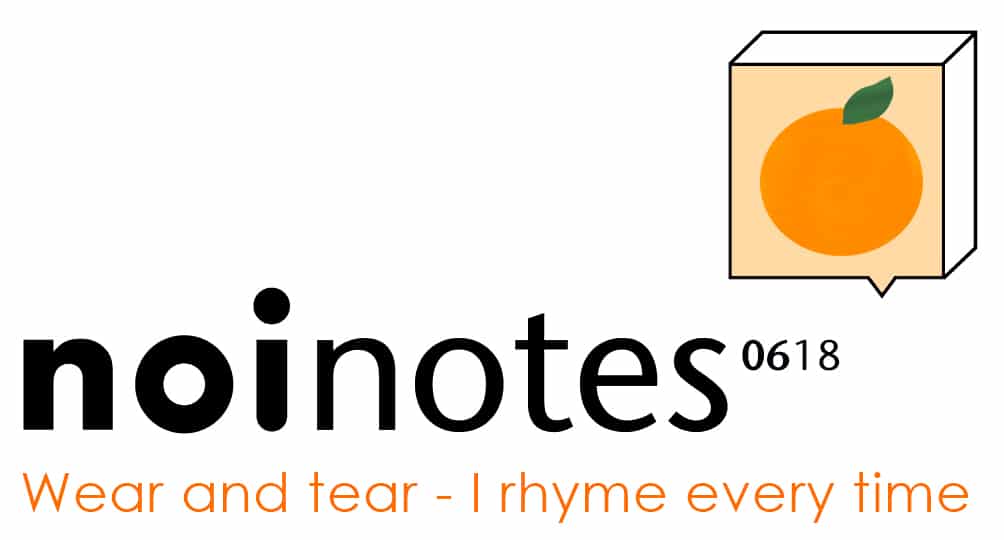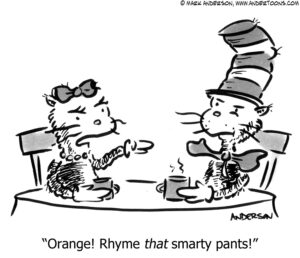 We all want our Explain Pain stories to be sticky, memorable and useful for our learners. There are many techniques that allow this, but one forgotten and underestimated technique is rhyme. Rhyme is a well-known tool to enhance memory, for example ‘thirty days hath September…’, ‘twinkle twinkle little star…’.
We all want our Explain Pain stories to be sticky, memorable and useful for our learners. There are many techniques that allow this, but one forgotten and underestimated technique is rhyme. Rhyme is a well-known tool to enhance memory, for example ‘thirty days hath September…’, ‘twinkle twinkle little star…’.
The mechanisms linking rhyme and memory are complex and numerous. Rhyme triggers a wider brain activation than non-rhyme, it allows forgiveable repetition in story- telling and the brain reward centres are activated when aesthetically pleasing, familiar and rhythmic patterns are heard. Rhyme also enhances theta brain rhythms which are known to help memory.

Rhyme is frequently used with alliteration and aesthetic language – both of which enhance memory. For instance, ‘All things bright and beautiful’. We will explore this in a later blog.
Rhyme can be unhealthy – a DIM. Take ‘wear and tear’. This term is so commonly used we have probably forgotten that it is actually a rhyme. A patient once told me “I am full of wear and tear, I am a stuffed little bear and who gives a care.” I never forgot it! The health world appropriated ‘wear and tear’ from the legal world where ‘fair wear and tear’ is used in relation to equipment warranties. Note how fair has been added to it.
The Explain Pain strategy here is to break the rhyme. The best way is usually to challenge it. A story might go something like this. “Wear and tear – that’s a term used for machines. Health professionals have used it to describe x-ray changes, but it’s not a good descriptor. There is rarely any tear, more likely just a bit of wear which is quite normal and tells us how active you have been. Actually saying or thinking wear and tear can keep you on alert and more sensitive – maybe saying ‘a bit of normal wear’ rather than ‘wear and tear’ is more accurate.” You could also add “when our bodies wear, they always adapt and there will always be some repair”. So ‘wear and repair’ or ‘when it wears, it also repairs’ could be healthy alternatives.
There are more healthy rhymes that are likely to be SIMs. ‘Pace it don’t race it’ has a lovely meter (rhythmic pattern), the contrast easily enriched by mentioning the tortoise and hare. There is a physiotherapy practice in Sydney going by the delightful name of Bend and Mend. Makes you want to book in for an appointment.
Let’s not forget the NOI favourite ‘motion is lotion’. No wonder it is so sticky in the brain. Is it the rhyme, the meter, the imagery or the familiarity?
Evoke a little Shakespeare in the clinic! Share your rhyming SIMs and DIMs.
– David

Ah yes those “kisses of life” 💋
Use it or Lose it
Brain, muscles, bone, hope – the list can go on
It’s the golden oldie (that in itself is a form of rhyme) isn’t it ? And applicable to so many body parts, processes and functions.
David
You are the best. Great and punctuating blog.
Move to improve
So simple, memorable and perhaps a summary of the therapeutic interaction as the client leaves.
Direct from the Bard himself:
Nothing will come of nothing.
(King Lear Act 1, Scene 1)
for orthostatic hypotension symptoms:
wiggle your toes
’til the dizziness goes
oooh that’s helpful. Not only the obvious rhyme but also a delightful rhythm and and assonant rhyme as the “i” in wiggle rhymes with the first “i” in dizziness.
Very memorable!
David
Can’t go wrong getting strong